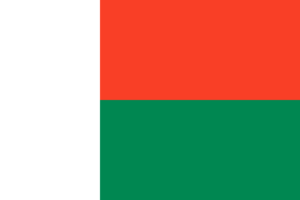Madagascar | History, Capital, Language, Flag, Facts & Geography of Madagascar
History of Madagascar:
Madagascar was first inhabited by Indonesian sailors in the 1st century AD. Tribal groups formed and today there are 18 different tribal groups. Among the largest are Merin, Betsileo and Betsimisaraka.
Arab merchants arrived in the 7th century and established trading posts along Madagascar’s northwest coast. The first European to arrive in the 15th century was the Portuguese captain Diego Diaz. Many years later the French established a trading post on the island. A powerful Merina leader united most of the island in his 1790s. In 1870 he made an agreement with England to abolish the slave trade.
Get Free Counseling
In return, Britain would provide military and financial support. In 1885 France made Madagascar a colony. The British, who were also heavily involved in Madagascar, agreed to this in exchange for control of Zanzibar. After World War II, Madagascar moved towards independence. It became a fully independent country in 1960.
Information about Madagascar:
| Capital | Antananarivo |
| Population | 30,456,328 (Source: 2023 worldometer) |
| Major Cities | Antananarivo (capital), Toliary, Antsiranana, Antsirabe, Toamasina, Mahajanga, and Fianarantsoa |
| Borders | Maritime borders with Comoros, France (Mayotte and Réunion), Mauritius, Mozambique and Seychelles |
| Gross Domestic Product (GDP) | $14,954,967,604 (2022 worldometer) |
| Currency | Madagascar ariary (MGA) |
Flag of Madagascar:
Madagascar Economy Key Industries:
Madagascar Major Industries: meat processing, soap, breweries, tanneries, sugar, textiles, glassware, cement, automobile assembly plant, paper, petroleum, tourism
Madagascar Agricultural Products: coffee, vanilla, sugarcane, cloves, cocoa, rice, cassava (tapioca), beans, bananas, peanuts; livestock products
Madagascar Natural Resources: graphite, chromite, coal, bauxite, salt, quartz, tar sands, semiprecious stones, mica, fish, hydropower
Madagascar Major Exports: coffee, vanilla, shellfish, sugar, cotton cloth, chromite, petroleum products
Madagascar Major Imports: capital goods, petroleum, consumer goods, food
The Geography of Madagascar:
Total Size of Madagascar: 587,041 km2 (source: wikipedia)
Geographical Low Point of Madagascar: Indian Ocean 0 m
Geographical High Point of Madagascar: Maromokotro 2,876 m
Climate of Madagascar: Tropical along coast, temperate inland, arid in south
General Terrain of Madagascar: narrow coastal plain, high plateau and mountains in center
World Region or Continent of Madagascar: Africa
Geographical Coordinates: 20 00 S, 47 00 E
The People of Madagascar & Culture
Madagascar Government Type: republic
Madagascar Nationality: Malagasy (singular and plural)
Madagascar National Holiday: Independence Day, 26 June (1960)
Madagascar Independence: 26 June 1960 (from France)
Madagascar National Symbol:
Madagascar National Anthem or Song: Ry Tanindraza nay malala o (Oh, Our Beloved Fatherland)
Madagascar Languages Spoken: French (official), Malagasy (official)
Madagascar Religions: indigenous beliefs 52%, Christian 41%, Muslim 7%
Interesting Facts about Madagascar:
Madagascar is often referred to as the eighth continent. Madagascar separated from India 88 million years ago after its first separation from the supercontinent Gondwana (which includes Africa, South America, Antarctica and Australia) around 165 million years ago. This separation has resulted in flora and fauna found nowhere else on the planet.
90% of Madagascar’s fauna is endemic (cannot be found anywhere else). If you want to see lemurs in the wild, the country’s iconic animal, the only place you can see them is in Madagascar. It’s also home to species you’ve probably never heard of. Like the Fossa, a feline mammal closely related to the mongoose. There is nothing more interesting than the fact that Madagascar has unique and fascinating animals.
The only animals in the Madagascar movies that actually live in Madagascar are the lemurs and the Fossa. Zebras, lions or penguins do not live in Madagascar, even though they appear in the film.
Madagascar has a giraffe weevil but no giraffe named Melman. Giraffes have also appeared in films in Madagascar but there is no such thing as a 5 meter tall giraffe walking around. Instead, there are charming 2.5-centimeter-long insects called giraffe weevils that inhabit the rainforests of Malagasy. Male giraffe weevils use their long necks to compete for females (just like your regular giraffes!).
In the movie Madagascar should have been Queen Juliana, not King Juliana
The Madagascar plant is used in the treatment of cancer. There are more than 12,000 extremely diverse plant species growing in Madagascar, and due to limited access to medical care, the Malagasy people use the plant for medicinal purposes. However, in addition to traditional herbal treatments, species such as Madagascar periwinkle are also harvested to produce drugs used to treat Hodgkin’s disease, leukemia and other cancers.
The geography of the “Red Islands” is eerie, with limestone forests and underwater caves. Madagascar is sometimes referred to as the “Great Red Island” due to the iron and aluminum rich soil that gives it its vibrant red color.
Madagascar is made up of 5 main geographical regions: Central Highlands, massif in the north, east coast,
However, there are few lakes – the largest is LacAlaotra, surrounded by ecologically important marshes and facing heavy pressure from human activity.
